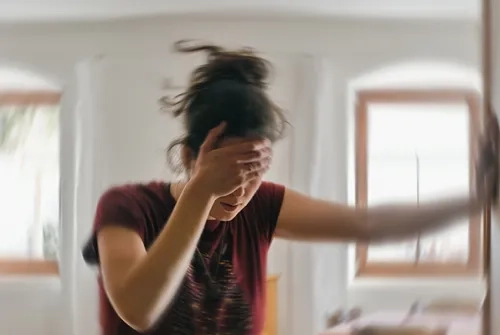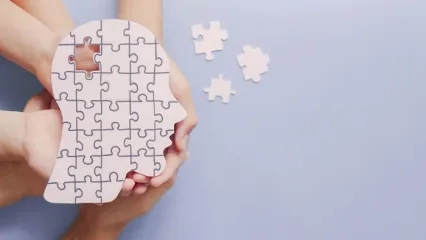Alo Yeditepe
Alo Yeditepe
What is a Stroke (Apoplexy)?
What is a Stroke (Apoplexy)?
A stroke, also known as Apoplexy is a clinical condition that occurs when the brain tissue does not receive the necessary supply of energy and oxygen. In other words, blood vessels supply the required energy and oxygen to the brain tissue, and when this supply is interrupted, it results in what we call a stroke.
What causes stroke?
Blockage or obstruction in the brain vessels as a result of the clot settling in these vessels. The main causes of stroke are vascular rupture, which causes on bleeding.
What are the risk factors for stroke?
Diabetes, high blood pressure, drug abuse, smoking Usage, old ages are risk factors for me.
Findings such as sudden speech impairment, visual impairment, weakness in arms and legs, sensory disorders, balance disorder, unilateral sagging in the corner of the mouth may be signs of stroke.
Is It Possible to Have a Stroke Without Realizing It?
It is possible to have a stroke that occurs and recovers in a short time. We call this situation a transient ischemic attack. Except this, there are also cases that occur as a result of occlusion of vessels that are too small to cause symptoms and that we can only detect when we perform brain imaging. Continuous recurrence of these silent strokes may cause disability in the long term.
How is Stroke Diagnosed?
The most important thing in stroke is time. If we have a relative who we think has had a stroke, we need to take him to the hospital immediately so that he can be treated in time. In patients with the findings I have just mentioned, we immediately diagnose stroke by performing brain imaging and determine what type of stroke it is. Treatment also varies accordingly. In addition to brain CT (computed tomography) or brain MRI (magnetic resonance), examinations such as CT angiography showing the brain vessels can also be performed.
How is Stroke Treated?
If a stroke patient whose brain vessel is blocked by a clot reaches the hospital within the first 4.5 hours after the event begins, clot-dissolving treatments can be given if his clinical condition is appropriate. In addition, in suitable patients, it is also possible to access and remove the clot in the vein through interventional angiography called Thrombectomy. After these procedures, blood thinning treatments are started to prevent a new stroke.
The approach to patients who have a stroke due to brain hemorrhage is different. Necessary treatments are applied to minimize the damage that this condition will cause to the brain tissue. If necessary, surgical treatment can also be performed.
What to Pay Attention to After a Stroke?
Depending on the severity of the condition, some patients recover from a stroke without experiencing any long-term or serious problems. However, some may lose important brain functions; For example, they may not be able to talk, eat, or move one side of their body. In this case, it will be necessary to get help from experts in the field, such as occupational therapist, physiotherapist, speech therapist.
After a stroke, the risk of other medical problems such as feeding problems, lung or urinary tract infections, and bedsores increases. In this respect, constant medical care and control may be required. There are precautions we need to take to prevent the stroke patient from experiencing the same situation again and to protect the remaining healthy brain tissue. Strict control of diseases such as diabetes, hypertension and high cholesterol is important in preventing stroke.
Is it possible to be protected from stroke? What needs to be done?
In addition to treating the diseases we just mentioned, it is also possible to make some changes in lifestyle. Some of these include quitting smoking, exercising regularly, losing weight if you are overweight, limiting salt and alcohol consumption, and eating a diet rich in fruits, vegetables and low-fat dairy products and low in meat, sweets and refined grains.
What is the Temporarily Paralysis?
Transient amnesia is similar to a stroke but does not cause permanent damage to the brain. It occurs when an artery in the brain becomes blocked and then opens on its own. Although it does not cause permanent symptoms, it is a serious condition because it indicates a high risk of having a stroke. For this reason, people who have a transient amnesia should definitely consult a doctor. Stroke symptoms should not be ignored, even if they are temporary.
About
Faculty and Year of Graduation:
Celal Bayar University Medical Faculty, 2009
”
See Also
- What is Parkinson's Disease? What are the Symptoms of Parkinson's Disease?
- Pudendal Nerve Compression
- How to Protect Brain Health?
- What is Myasthenia Gravis Symptoms and Treatment Methods
- What is Epilepsy?
- School Stress Invites Sleepwalking
- Daughter-in-Laws Care for Alzheimer's Patients
- As Insomnia Increases, Its Harmful Effects on the Immune System Also Increase
- 8 Tips for Better Sleep
- Initial Symptoms of ALS Considered To Be Nerve Compression
- Healthy Microbiota Reduces the Risk of Alzheimer's
Alo Yeditepe




